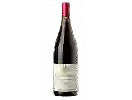
Winery Pascal PibaleauLoire Valley Chenin
In the mouth this white wine is a with a nice freshness.
This wine generally goes well with vegetarian, poultry or rich fish (salmon, tuna etc).
Taste structure of the Loire Valley Chenin from the Winery Pascal Pibaleau
Light | Bold | |
Dry | Sweet | |
Soft | Acidic |
In the mouth the Loire Valley Chenin of Winery Pascal Pibaleau in the region of Loire Valley is a with a nice freshness.
Food and wine pairings with Loire Valley Chenin
Pairings that work perfectly with Loire Valley Chenin
Original food and wine pairings with Loire Valley Chenin
The Loire Valley Chenin of Winery Pascal Pibaleau matches generally quite well with dishes of rich fish (salmon, tuna etc), vegetarian or poultry such as recipes of tuna, pepper and tomato quiche, quiche without eggs or thai rice, asian style.
Details and technical informations about Winery Pascal Pibaleau's Loire Valley Chenin.
Discover the grape variety: Chenin blanc
It most certainly originates from the Anjou region and is registered in the official catalogue of wine grape varieties on the A1 list. It can also be found in South Africa, Australia, Argentina, Chile, the United States (California), New Zealand, etc. It is said to be a descendant of Savagnin and to have sauvignonasse as its second parent (Jean-Michel Boursiquot 2019). On the other hand, Chenin blanc is the half-brother of verdelho and sauvignon blanc and is the father of colombard.
Last vintages of this wine
The best vintages of Loire Valley Chenin from Winery Pascal Pibaleau are 2012, 2011
Informations about the Winery Pascal Pibaleau
The Winery Pascal Pibaleau is one of of the world's greatest estates. It offers 7 wines for sale in the of Loire Valley to come and discover on site or to buy online.
The wine region of Loire Valley
The Loire Valley is a key wine region in western France. It follows the course of the Loire River on its Long journey through the heart of France, from the inland hills of the Auvergne to the plains of the French Atlantic coast near Nantes (Muscadet country). Important in terms of quantity and quality, the region produces large quantities (about 4 million h/l each year) of everyday wines, as well as some of France's greatest wines. Diversity is another of the region's major assets; the styles of wine produced here range from the light, tangy Muscadet to the Sweet, honeyed Bonnezeaux, the Sparkling whites of Vouvray and the juicy, Tannic reds of Chinon and Saumur.
The word of the wine: Ice wine
Sweet wine obtained by pressing frozen berries harvested in the middle of winter.














